| Content | Heritage Audio's MCM-8 MK2 is an 8-slot 500 Series chassis with an integrated 10-channel summing mixer. The top-of-the-line MCM-8 MK2 features On Slot Technology that leverages next-generation power electronics to handle power supply on a per slot basis. Each slot has its own power supply linear regulation stages, isolating each module from the rest. Your modules simply share the metal enclosure. Each slot even has test LEDs for checking correct power operation. Dual-concentric potentiometers handle Volume and Pan for each slot, with pan pots being center detented for precise center positioning. Each channel is equipped with an On switch to assign it to the mix bus. MK2 improvements include a lower noise floor and the addition of a bypass switch for each slot that still lets you use the summing mixer functions. Heritage Audio has earned the respect of Sweetwater engineers, and the MCM-8 MK2 lives up to that sterling reputation.
Superb build and feature set
From its RAF blue-gray enclosure to the solid tactile feedback from its knobs and switches, the Heritage Audio MCM-8 MK2 unabashedly rocks vintage British Class A vibe. And just like the classic gear that inspires all Heritage Audio equipment, the MCM-8 MK2 boasts superb build quality and a very smart feature set. There's an additional stereo input on the back panel, which allows several MCM-8 MK2 units to be daisy-chained — or signals not needing further 500 Series processing to be mixed together. The central section sports analog VU meters and a Stereo Master fader. Gold-plated XLRs and DSUB25s handle the I/O.
Smart technology, superior sound
Thanks to Heritage Audio's On Slot Technology (OST), the MCM-8 MK2's power capability is a maximum of 400mA per rail, per slot — with an overall of 1.4A (1.6A non-continuous) per rail, whichever is reached first. Total available phantom power is 140mA. The mix bus has a passive voltage summing topology, similar to that found in Rupert Neve's 80 Series consoles of the 1970s. The gain loss is restored by the same Class A, 2n3055 driven, transformer-based output stage used in the Heritage Audio's modern-day version of the classic 1073. If you're not into specs, what this all means is that the MCM-8 MK2 is built right to give you many years of authoritative sonic performance and trouble-free use in your studio or on the road.
Heritage Audio MCM-8 MK2 Features:
- 8-slot 500 Series chassis with integrated 10-channel summing mixer
- NEW lower noise floor
- NEW bypass switch for each slot that leaves summing mixer functions enabled
- Mix bus with vintage Neve-style passive voltage summing topology
- Additional stereo input on the back panel allows several MCM-8s to be daisy-chained
- Central section sports analog VU meters and a Stereo Master fader
- Handles power supply on a per slots basis, isolating each module from the rest
- Gold-plated XLRs and DSUB25s handle your I/O
- 140mA total available phantom power
- Class A transformer-based output stage
- Solid build quality for many years of trouble-free use
| Espandibile fino a 32 canali - QCon Pro XS8 + 1 fader motorizzati sensibili al tocco con risoluzione a 10 bitFader LED a 12 segmentiDoppio display LCD retroilluminato 2 × 56 per visualizzare il nome del canale. i valori di controllo. ecc. Per ogni canaleDisplay LED a 12 segmenti che mostra la posizione temporale del progetto in formato SMPTE o BBT - 18 pulsanti assegnabiliRotella jog shuttle per ricerca e controllo velociPulsanti illuminati per ogni canale. inclusi Record Enable. Solo. Mute. Select e Monitor6 pulsanti illuminati tra cui Play. Stop. Rec. Rewind. Fast Forward e LoopPulsante ZOOM illuminato con 4 pulsanti di direzione9 pulsanti funzione MIDI assegnabili illuminatiEspandibile a 32 canali utilizzando 3 unità di espansione QCon XSDue (2) connettori da 1/4 per interruttori a pedale e pedaliClasse compatibile con Windows XP. Vista (32 bit). Windows 7 (32 bit e 64 bit). Windows 8 (32 bit e 64 bit). Windows 10 (32 bit e 64 bit) e Mac OS XConnettività USB 2.0 ad alta velocitàIl driver ICON Quick-Setup è disponibile per Cubase. Nuendo. Reason e Bitwig per la compatibilità plug & play istantaneaBitwig Studio 8-Track DAW è incluso.Mackie Control integrato per tutte le DAW elencate (ad eccezione di ProTools che utilizza il protocollo Mackie HUI)Facile aggiornamento del firmware disponibile tramite connessione USB e software iMapQualità costruttiva superiore e robusto involucro in metallo con porta per blocco Kensington
Dimensioni: Lunghezza 51cm - Profondità 23.5cm - Altezza 57.5cm - Volume 0.068m³
Icon # Qcon Pro X - controller per DAW # Controller Midi / Controller Midi USB # Serie Qcon | The Heritage Audio MCM-20.4 is a rackmount analog summing mixer that delivers vintage-quality sonics along with sophisticated routing options to streamline your hybrid studio setup. The MCM-20.4 offers 16 input channels arranged into two subgroups of eight. Each channel features concentric pan and level controls plus a balanced insert and a mute switch. Each group has its own stereo fader and balanced insert point. Both stereo subgroups are passively summed into the master bus, which has its own balanced insert point and VU meters. Makeup gain is provided by a transformer-coupled, 1073-style Class A mic preamplifier with four transformers (two per channel). Four channels of pre/post-fader aux sends are provided: AUX 1 and 2 are mono; AUX 3 is stereo. Insert send points are always signal-present, giving them an alternative use as direct outputs for recording. Rear-panel connections are made via DB-25 connectors; except for the master bus, which has dedicated XLRs.
The best of both worlds
Done up in classic RAF blue-gray livery — complete with concentric pots and Marconi knobs — the Heritage Audio MCM-20.4 gives visual hints as to the sound lurking beneath the bonnet. Flavored by four transformers, that sound is decidedly vintage British, although Heritage has taken pains to improve crosstalk and self-noise specs from those of the vintage designs. The smart-summing topology employed in the company's MCM series mixers delivers impressive headroom and low noise for a 20 channel, vintage-topology mixer. Sweetwater's advice: If you want to smoothly integrate analog gear — and robust, colorful sonics — into your DAW-based workflow, the Heritage Audio MCM-20.4 is a great-sounding, elegant solution.
Heritage Audio MCM-20.4 20-channel, Vintage-topology Rackmount Mixer Features:
- 16 input channels arranged into 2 subgroups of 8
- Each channel features concentric pan and level controls plus a balanced insert and a mute switch
- 2 stereo subgroups are passively summed into the master bus
- Master bus has its own balanced insert point and VU meters
- 4 channels of pre/post-fader aux sends
- Rear-panel connections are made via DB-25 connectors
- Master bus connections via dedicated XLRs
| An 8-channel stereo summing mixer with 12AX7 tubes for sonic excitement, the Radial Space Heater can add incredible depth and harmonic richness to your tracks. Recording engineers at Sweetwater know that summing in the analog domain, as opposed to within your DAW, is a great way to get that big-console sound. The Space Heater's variable tube overdrive allows you to add everything from subtle transformer warmth to rich harmonic distortion. From gluing individual drum tracks into a cohesive kit to mixing down your final stems, the Radial Space Heater will add a great sound to your productions.
Tubes and transformers are just what your digital tracks need
No matter how well you record your tracks, or how you approach your mixes in your DAW, it's hard to beat the undeniably rich and deep sound that summing in the analog domain is known for. Instead of investing in a large analog console, a summing mixer like the Radial Space Heater is the perfect match for DAW-based studios. The transformer-coupled outputs add a touch of warmth, and variable tube overdrive is perfect for adding sparkle to vocals, depth to acoustic instruments, and even full-on distortion for extreme effects. Send your stems through the Space Heater, record the stereo mix back into your DAW, and you'll be impressed with the results.
Variable voltage for fine-tuning the tube sound
The Radial Space Heater not only gives you variable tube overdrive for each stereo input pair, but it also allows you to switch between 35-volt, 70-volt, and 140-volt operation. Use the 35-volt setting for maximum grit and distortion, or switch over to 70 volts for cleaner headroom and a smoother sound. When you want the cleanest headroom, switch over to 140 volts. You can adjust the voltage for each stereo input pair individually, which means you can add gritty overdrive to rock vocals while giving bass and drums tons of clean headroom for a deep, punchy sound.
Two useful studio tools in one
One look at the back panel tells you that the Radial Space Heater is ready to be a studio workhorse. Each of the eight channels can be set up as a hardware insert, which means you can send individual tracks through the Space Heater to add tube saturation and transformer warmth. Once your individual tracks are perfect and you're ready to sum your final mix, run your stems through the Space Heater and record the final stereo mix to your DAW. The Space Heater is effectively a smart combination of four outstanding tube/transformer modules plus an analog mixer.
Radial Space Heater 8-channel Tube Summing Mixer Features:
- Stereo summing mixer for adding warmth, depth, and harmonic richness
- A 12AX7 tube for each input pair lets you add anything from subtle sparkle to full-on distortion
- Transformer-coupled outputs add a touch of character while maintaining a high-quality, low-noise signal
- 3 adjustable voltage modes (35-volt/70-volt/140-volt) allow you to adjust how much clean headroom you have before distortion begins
- Use it as an analog summing mixer or as 4 individual tube saturation/transformer warmth modules
- Multiple units can be linked for higher channel count
| The Ultimate Desktop Mixer Legendary SSL studio tools redefined and streamlined
To the casual observer SiX looks like any other compact desktop mixer. Look a little closer and like all SSL consoles, SiX reveals a carefully considered feature set that is driven by an obsessive desire for total flexibility, to encompass every creative eventuality. It may be small but SiX is a classic SSL design. It carries the DNA of 40 years of true expertise in creative studio workflow. Listen to SiX and you will experience the impeccable sonic performance that is the hallmark of every SSL console. It is powerful and intuitive. Inspired and rewarding.
SiX is a condensed professional console for use in the studio, in post-production, on stage, and for podcasting. SiX offers big console sound and an impressive set of utility features in a format that is small enough to stick in a bag a go wherever you need it. SiX is stunning value; it offers two recording channels with SuperAnalogueTM mic pres, two band EQ, an essential one knob version of the classic SSL Channel Compressor, a new two-band Channel EQ, inserts and 100mm faders. There is a two-knob version of the legendary G-Series Bus Compressor on the main mix bus and the unique Listen Mic Compressor on the Talkback. In mixdown mode it is a very capable twelve channel summing system that offers analogue detail, depth and width to your mixes.
The SuperAnalogue™ Sound of SSL
SiX is an SSL SuperAnalogue™ design – it gives you the sonic signature of a large format SSL console on your desktop or in your backpack. Its signal path is fully balanced from front to back on everything except the headphone output. It delivers pristine, detailed audio with wide dynamic range, ultra-low noise, ultra-low distortion and superb imaging. If you want to know more about the technical reasons why SSL mixers sound so good read our document.
Two Recording Channels
SiX has two mono channels with SSL SuperAnalogue™ Mic’ Pre’s; these are transparent, fast and have a much wider available gain range than you would typically get on a compact desktop mixer – 66dB of gain compared to the more typical mid-40s or 50dB found in desktop mixers. They have phantom power, 75Hz high pass filter and an independent line-level input which can be switched to instrument level input with high impedance.
Moving down the channel strip we have a brand-new one knob compressor circuit. This design is based on and has the same sound as the classic SSL feed-forward Channel Compressor circuit. It has a program-dependent attack time, a fixed release time and fixed ratio. Simply adjust the threshold, watch the traffic lights flash to see how much compression is happening and rely on the circuit to automatically adjust gain to match input levels. This is a cool-sounding circuit that makes it simple to dial in a consistent level and get signals sitting right in the sweet spot.
Both mono channels have a new two-band SSL EQ that may be independently switched between shelf and bell curves, with different centre frequencies for each type. This approach draws upon the SSL design legacy of specifying response curves and centre frequencies for channel EQ that are immediately intuitively pleasing in their response; these curves and frequencies were selected by our team as the most “musically useful” for a wide range of sources.
SiX has 100mm faders. We spent some time working on alternate fader tapers and settled on a law that gave us the most control over the most useable gain range, making on-stage level control far easier than it would be with a rotary or a 60mm fader as found on other compact mixers.
Each channel has a fully balanced insert point for integrating other signal processors which is after the EQ and Compressor circuits, and like all SSLs the insert send is always active – meaning you can use this as a “dry” record send to your DAW if required.
At the bottom of the mono channels we have an ALTernate input switch which can source 2 extra mono channels from a connector on the rear of the console which can be used at mixdown.
Line Level Heaven
SiX has two stereo input channels with -10/+20 dB trim for line sources such as synthesisers, drum machines, output from soundcards etc. These have their own balance controls and 100mm faders. If only the Left input of a stereo channel is connected (and the right left free) the channel will automatically switch to mono, panned centre.
While SiX might be small it can handle a lot of inputs at mix-down! Using the two mono input and the two stereo input channels gives SiX its name, but we also have two stereo EXTernal inputs (with volume controls in the master section) which can be sent to the mix bus. Include the ALT inputs and we have up to 12 channels that can be summed into the main mix bus.
Master Bus Magic
SiX has a G Series Bus Compressor on the main mix bus. This uses the same circuit design as the legendary SSL Bus Compressor from our larger consoles but with a fixed ratio, attack, and release settings and a more modern quad-VCA chip. The simplified controls make it very easy to get that SSL glue and snap on whatever you push through your master bus. SiX also has a set of inserts on the main mix bus that can be used to bring external processing tools (like SSL Fusion) to your mixdown.
Routing Pro
SiX has a collection of professional routing & monitoring features taken directly from our large format console heritage. It has two Stereo Cue buses (with level and pan controls) for individual artist foldback mixes. The Master Section has main and alternate monitor outputs with a proper monitor source matrix, as well as mono check, dim and cut. The fader channels all have proper PFL and a Mute button that routes the muted signal to a ‘Bus B’. Bus B can be used as a convenient DAW record send but it can also be routed to the monitor matrix. This means that the muted signal can be monitored without it feeding the main mix bus and then switched in to the main mix with the Mute button – perfect for live webcasting because a remote feed can be monitored ‘offline’ and punched in to the broadcast feed. There is a talkback mic’ input with phantom power and SSL’s unique, crunchy Listen Mic Compressor, which of course also serves as a unique processing tool that delivers that classic 1980’s slammed drums sound.
Key Features:
A fully professional condensed console for use in the studio, in post-production, on stage, and for podcasting.
Benchmark SuperAnalogue™ audio performance
Ultra low noise : ultra-low distortion : pristine sound
Stunning Record Path
Two SSL console grade SuperAnalogue mic pre’s
Classic SSL Channel Processing
Essential versions of SSL Channel EQ and Dynamics
The unique Listen Mic Compressor
Nothing slams drums quite like it!
Professional Routing & Monitoring
The hidden versatility of truly professional features
12 Input Summing at Mixdown
12 line level inputs with channel and Master Bus inserts
Legendary Master Bus Compressor
An essential version of the incredible SSL legacy
Completely balanced signal path
Everything except the headphone jack is fully balanced | SPL MixDream Analogue Summing Unit
- Analogue outboard summing mixer
- Active Class A/60-volt stages
- 16 inserts for mixing external effects
- Individual and overall bypass relays
- Reduced of A/D conversions
- Efficient resampling individual tracks
- Latency-free monitoring
- Stereo expansion control for additional transparency
- Analogue peak limiter for gain optimisation
- Lundahl output transformers and inserts
- Adjustable insert levels, output levels and peak limiters
- Multiple units linkable for larger mixes
|
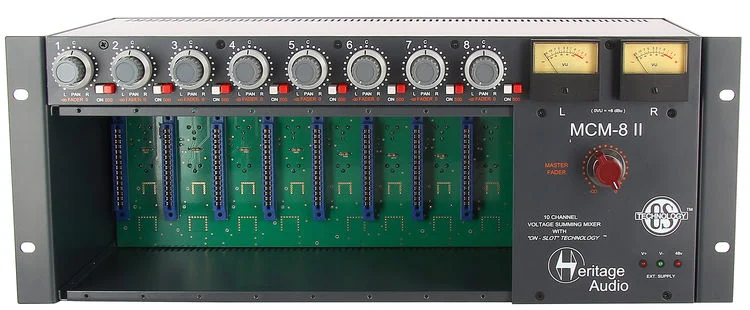

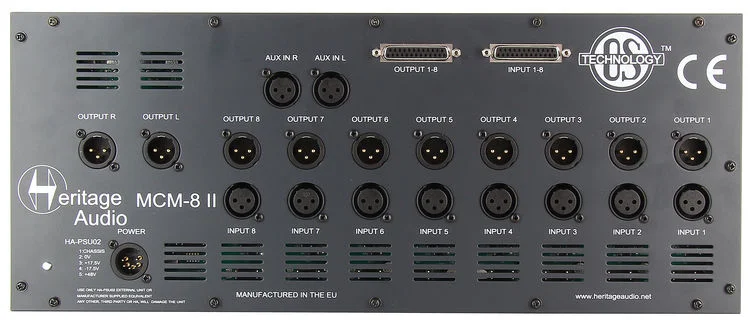


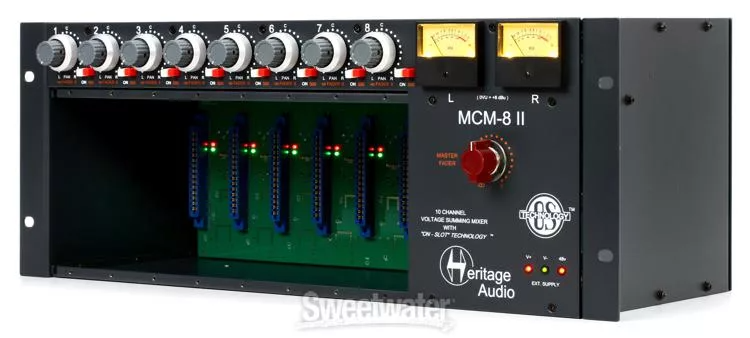
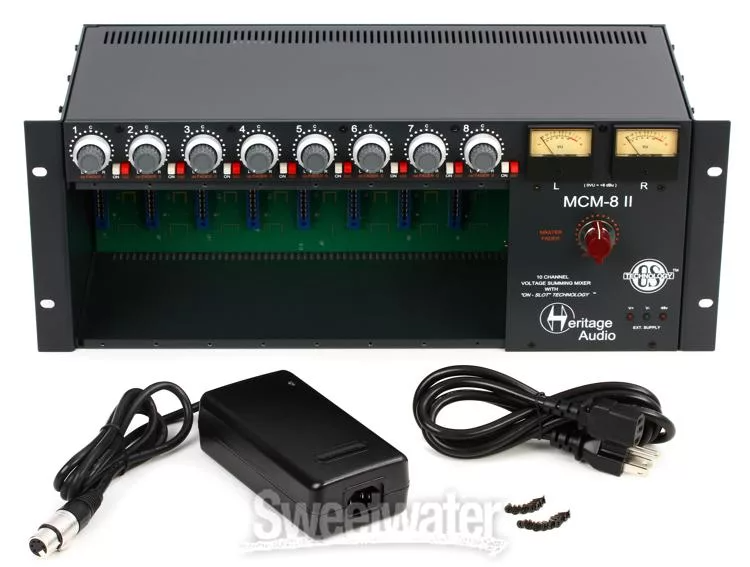




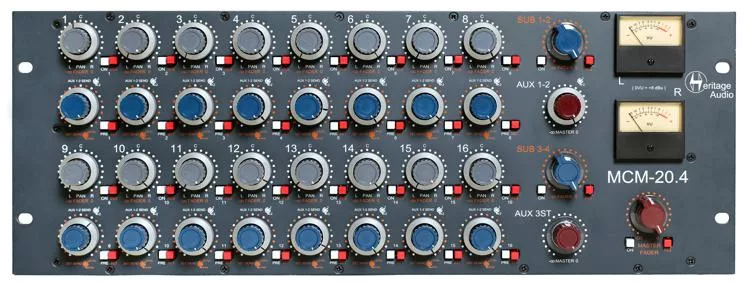



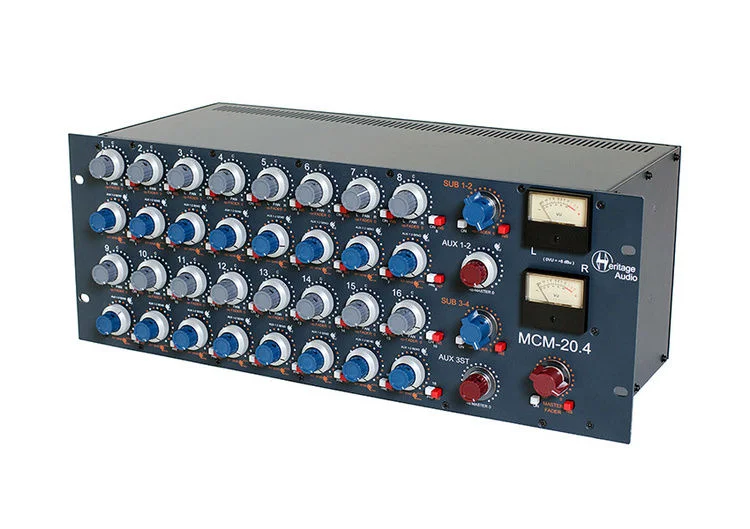
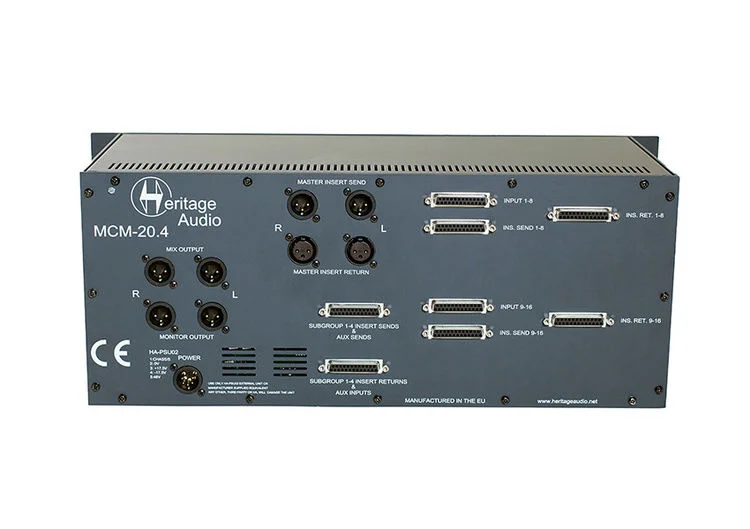




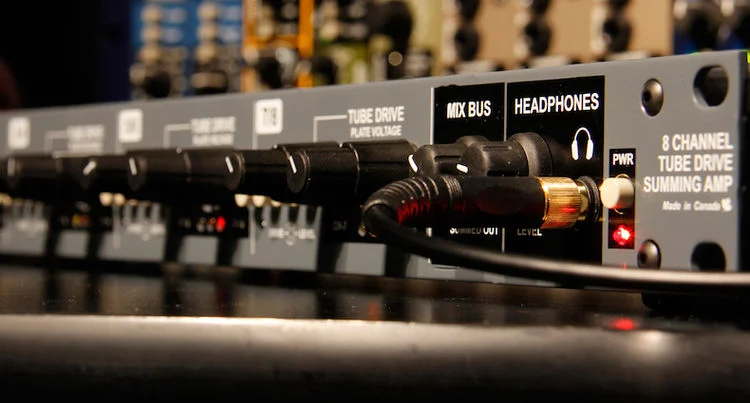
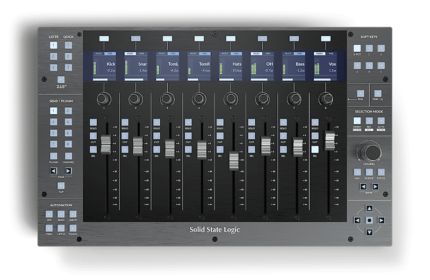








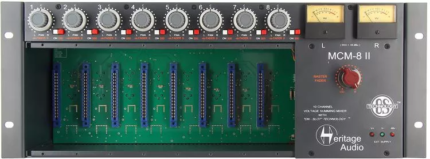
Reviews
There are no reviews yet.